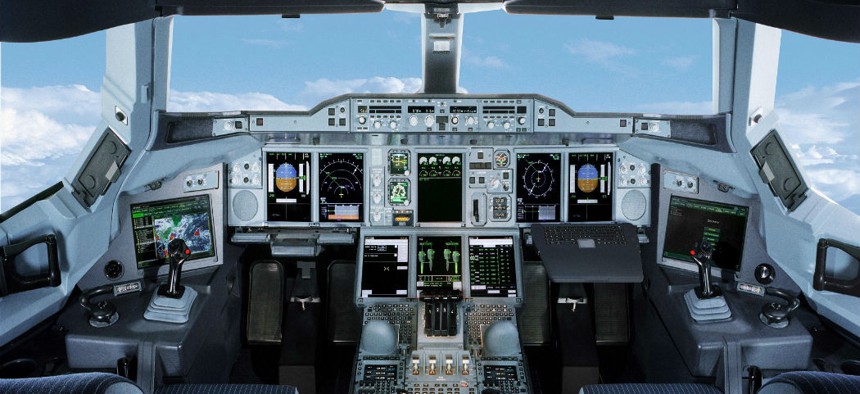DARPA tests helicopter with human-machine interface
The emerging technology allows on-board computers to perform a wide range of functions autonomously such as procedural checks on engines, lights and navigational instruments.
The Pentagon’s research arm is now demonstrating an entirely new level of aircraft autonomy that blends the problem-solving ability of the human mind with computerized robotic functions.
The Defense Advanced Research Project Agency (DARPA) program is called Aircrew Labor In-Cockpit Automation System, or ALIAS.
ALIAS is a tailorable, drop-in, removable kit that supports the pilot by handling routine or procedural tasks. It uses a software backbone designed with open interfaces along with a pilot-operated touchpad and speech recognition software. The project recognizes that while human cognition is uniquely suited to problem solving and rapid reactions to fast-changing circumstances, there are many procedural tasks which can be better performed by computers.
For instance, various check-list procedures and safety protocols such as engine status, altitude gauges, lights, switches and levers, can be more rapidly, safely and efficiently performed autonomously by computers. It also includes a tablet that responds to voice commands and reads the signals from the aircraft’s cockpit dashboard. Pilots can use this touch screen tablet or voice commands to direct the aircraft to perform functions autonomously
“This [system is capable of handling] routine tasks that humans need to do, but, at times, find mundane and boring. The ALIAS system is designed to be able to take out those dull mission requirements-- such as checklists and monitoring--while providing a system status to the pilot. The pilot can concentrate on the broader mission at hand,” Mark Cherry, President and COO of Aurora Flight Sciences, told Defense Systems.
The aircraft is able to perform a wide range of functions, such as activating emergency procedures, pitching, rolling, monitoring engine check lights, flying autonomously to pre-determined locations or “waypoints,” maneuvering and possibly employing sensors – without needing human intervention.
The human brain therefore functions in the role of command and control, directing the automated system to then perform tasks on its own, Cherry said.
“It uses beyond line of sight communication which is highly autonomous but still flies like a predator or a reaper,” said John Langford, CEO of Aurora Flight Sciences.
Developers explain that ALIAS, which has already been demonstrated by DARPA industry partners Lockheed Martin Sikorsky and Aurora Flight Sciences, can be integrated into a wide range of aircraft such as B-52s or large civilian planes.
Initial configurations of ALIAS include small aircraft such as a Cessna 208 Caravan, Diamond DA42 and Bell UH-1 helicopters, Cherry explained. The ALIAS system is able to learn and operate on both single engine and dual-engine aircraft and on fixed-wing aircraft and helicopters.
Both Lockheed and Aurora Flight Sciences have developed and demonstrated ALIAS prototypes; DARPA now plans to conduct a Phase III down-select to pick one vendor to continue development of the project.
As algorithms progress to expand into greater artificial intelligence functions, computers with increasingly networked and rapid processors are able to organize, gather, distill and present information by themselves. This allows for greater human-machine interface, reducing what is referred to as the “cognitive burden” upon pilots.
There are some existing sensors, navigational systems and so-called “fly-by-wire” technologies which enable an aircraft to perform certain functions by itself. ALIAS, however, takes autonomy and human-machine interface to an entirely new level by substantially advancing levels of independent computer activity.
In fact, human-machine interface is a key element of the Army-led Future Vertical Lift next-generation helicopter program, which plans to field a much more capable, advanced aircraft sometime in the 2030s.
A technology such as ALIAS could prove quite important to these efforts. A Joint Multi-Role Technology Demonstration Army S&T program is already underway as a developmental step toward engineering this future helicopter. The intention of the FVL requirement, much like ALIAS, is to lessen the cognitive burden upon pilots, allowing them to focus upon and prioritize high-priority missions.
NEXT STORY: Army renews key supercomputing contracts




